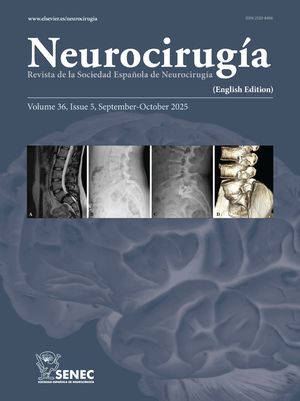Los traumatismos craneoencefálicos (TCE) representan la primera causa de muerte en la población por debajo de los 45 años de edad. En la última década se han producido avances significativos tanto en el conocimiento de los mecanismos básicos de los traumatismos como en su fisiopatología. Aunque una parte considerable de las lesiones se producen de forma inmediata al impacto (lesiones primarias), muchas de ellas aparecen un período variable de tiempo después del traumatismo (lesiones secundarias). La isquemia cerebral, causada por hipertensión intracraneal, por una reducción en la presión de perfusión cerebral o secundaria a insultos sistémicos en la fase prehospitalaria (hipoxia, hipotensión o anemia) es la lesión secundaria de mayor prevalencia en los traumatismos craneoencefálicos graves (TCEG). El hecho de que las lesiones secundarias originan a su vez, importantes cascadas metabólicas, que son la causa más importante de alteraciones celulares y de lesiones estructurales irreversibles, ha sido el avance fisiopatológico más significativo en el conocimiento de los TCE. Este mejor conocimiento de su fisiopatología ha permitido mejorar la monitorización e incrementar de forma significativa la asistencia ofrecida a estos pacientes. En la primera parte de este trabajo, revisamos los conceptos fundamentales en los mecanismos etiopatogénicos implicados en los TCE, en su fisiopatología y en las cascadas metabólicas implicadas. Revisamos también los principios básicos en la monitorización de estos pacientes.
Head injury is the leading cause of death amog people under the age of 45. In the last decade significant advances in the understanding of the basic mechanisms of injury and its physiopathology have been made. Although major damage to the brain is often produced inmediately on impact (primary damage), many lesions appear a variable period of time after injury (secondary lesions). Ischemic damage related to high intracranial pressure, low cerebral perfusion pressure or prehospitalary systemic insults (hypoxia, hypotension or anemia), is the most important secondary lesion found after severe head injury. The fact that secondary lesions induce important metabolic cascades which are the leading cause of cellular disorders and structural damage to the brain after severe head injury, has been the main advance in physiopathological knowledge. A better understanding of the pathophysiology of head injury has allowed a better monitoring and an improvement in the standard of care offered to these patients. In the first part of this work, we review the current concepts in basic mechanisms involved in head injury, the pathophysiology of these lesions and the metabolic cascades involved. The accepted standards of monitoring in the management of these patients are also reviewed.
Article

If it is the first time you have accessed you can obtain your credentials by contacting Elsevier Spain in suscripciones@elsevier.com or by calling our Customer Service at902 88 87 40 if you are calling from Spain or at +34 932 418 800 (from 9 to 18h., GMT + 1) if you are calling outside of Spain.
If you already have your login data, please click here .
If you have forgotten your password you can you can recover it by clicking here and selecting the option ¿I have forgotten my password¿.






